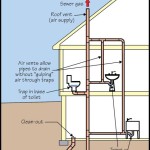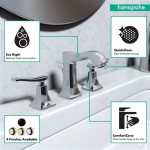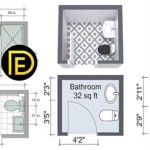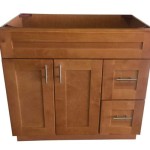Ada Bathroom Sink Faucet Requirements
The Americans with Disabilities Act (ADA) is a comprehensive civil rights law that prohibits discrimination against individuals with disabilities. Its mandate extends to public spaces, including restrooms, which means that bathroom sink faucets must meet specific accessibility standards to ensure equal opportunity for all individuals. This article delves into the essential requirements for ADA-compliant bathroom sink faucets, providing clarity on their design and functionality.
1. Faucet Reach and Operation
Accessibility hinges on the ease with which individuals can use bathroom facilities. For sink faucets, this translates into reach and operation. ADA standards dictate that the faucet spout and control knobs must be within an accessible range. The faucet's spout height must be between 17 inches and 19 inches above the finished floor, and the control knobs must be positioned between 15 inches and 48 inches above the finished floor. This range allows for easy access by individuals using wheelchairs or those with limited upper body mobility.
Furthermore, the operation of the faucet must be intuitive and effortless. Lever handles are the preferred control mechanism for ADA compliance, as they offer greater ease of use compared to knobs. The lever handles should be positioned so that they can be operated with one hand, without requiring excessive force or twisting. The operating force required to turn the lever handle should be within a specified range, ensuring that individuals with weakened grip strength can still easily activate the water flow.
2. Faucet Spout Design and Function
The design of the faucet spout is crucial for accessibility and hygiene. The spout must be designed to prevent water from splashing back onto the user and to facilitate easy cleaning. ADA standards specify that the spout must have a minimum clearance of 4 inches from the front of the sink to the center of the spout. This clearance minimizes the risk of the user getting wet while washing their hands, particularly individuals who might have difficulty maneuvering themselves in front of the sink.
The spout should also feature a gooseneck or a similar design that extends outward from the faucet body. This design allows for greater flexibility, enabling individuals with limited mobility to easily move their hands under the spout to wash their hands. Additionally, the spout should be equipped with an aerator, a component that mixes air with the water stream, creating a more gentle and controlled flow. This reduces the risk of splashing and promotes a more pleasant handwashing experience.
3. Faucet Temperature Controls
Maintaining water temperature within a comfortable range is paramount for both convenience and safety. ADA standards address this aspect by requiring that bathroom sink faucets have a mechanism for regulating the water temperature. This mechanism typically takes the form of a separate temperature control knob or lever. The temperature control should be positioned within reach of the user, allowing them to adjust the water temperature to their preference.
In addition to temperature control, ADA guidelines also address water pressure. The water flow rate from the faucet must be within a specified range, ensuring a comfortable and efficient handwashing experience. The pressure should be sufficient to provide adequate water flow for cleaning, but not so strong as to cause discomfort or risk of scalding. Proper water pressure management is crucial for promoting accessibility and safety.
4. Faucet Installation and Maintenance
The installation and maintenance of ADA-compliant bathroom sink faucets are equally important for ensuring continued accessibility. The faucet should be installed securely to the sink and the surrounding surfaces, with no potential for movement or instability. This is particularly crucial for individuals using wheelchairs, who might place more stress on the faucet during use.
Regular maintenance is essential to maintain the functionality and accessibility of the faucet. This includes cleaning the faucet regularly to prevent dirt and mineral buildup, which can hinder smooth operation. Additionally, any damage or wear and tear to the faucet should be addressed promptly to avoid compromising its accessibility. Proper installation and maintenance ensure that the faucet remains functional and accessible for years to come.

Ada Compliant Bathroom Sinks And Restroom Accessories Laforce Llc

Ada Compliant School Stainless Steel Sinks

Reach Ranges At Sinks Abadi Access

Ada Compliant Bathroom Sinks And Restroom Accessories Laforce Llc

Reach Ranges At Sinks Abadi Access
How To Pick An Ada Compliant Faucet

Ada Sink Clearance Requirements Compliance

Chapter 6 Lavatories And Sinks

5 Tips For Picking An Ada Compliant Faucet Ferguson Com

Ada Bathroom Requirements Thebath Com
Related Posts







